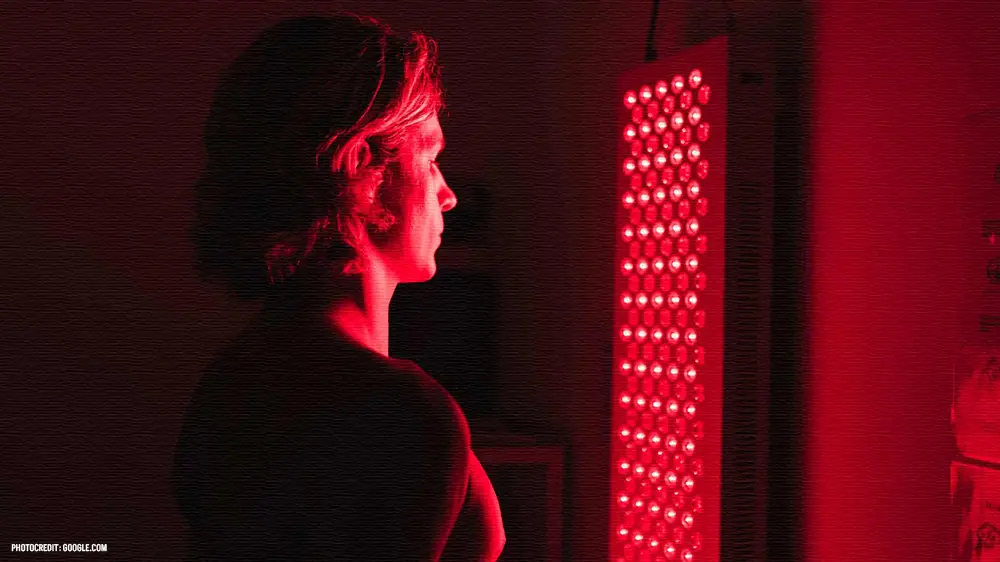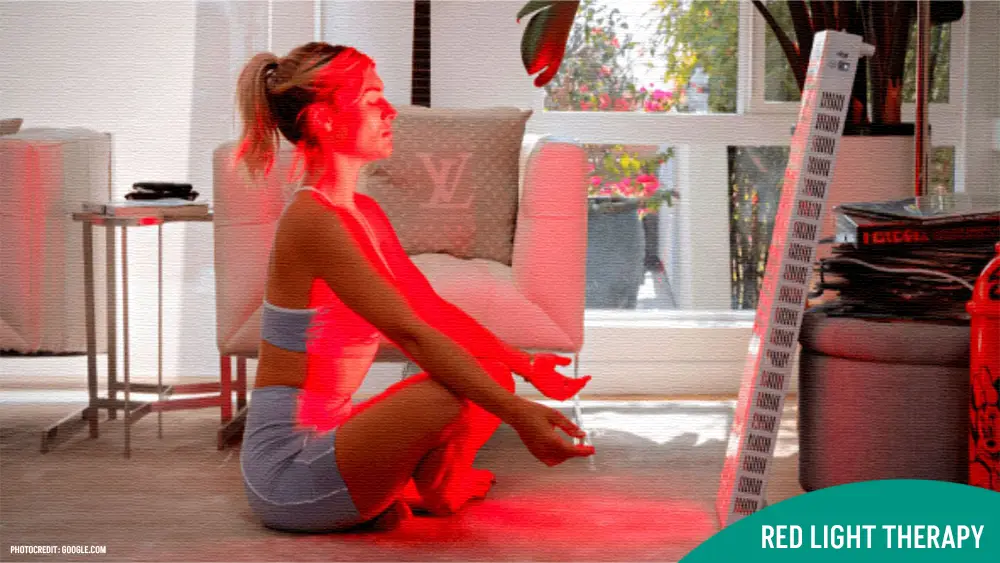
HEALTH BLOG
Red Light Therapy Before and After: A Extensive Guide
-
 Rahul Priydarss
Rahul Priydarss - February 21, 2024
Discover the remarkable transformations possible with red light therapy before and after treatment. Explore how this innovative approach can rejuvenate your skin, alleviate pain, and promote hair growth. Uncover the science behind red light therapy and learn practical tips for achieving optimal results.
What is Red light therapy:
According to many doctors researchers and healthcare advisers, Red light therapy (RLT) is a treatment that uses short-wavelength red light to reportedly improve the appearance of your skin, such as reducing wrinkles, scars, redness, and acne. It is also promoted to treat other medical conditions.
To date, there is a lot of research going on, small studies published, and much discussion on the Internet regarding the effectiveness of red light therapy for all kinds of health uses. The results of some studies show some promise, but the full effectiveness of red light therapy has not yet been determined. However remarkable transformations are possible with red light therapy before and after treatment.

Table of Contents
Introduction:
Red light therapy or red light therapy before and after treatment., also known as low-level laser therapy (LLLT) or photobiomodulation (PBM), involves exposing skin to low red or near-infrared light levels. This type of therapy is used for various health and cosmetic purposes, including skin rejuvenation, wound healing, reducing inflammation, and improving muscle recovery. Before and after the use of red light therapy, individuals may notice several changes, depending on the condition being treated. Here are some general observations and scientific findings related to before and after effects:
How It Works:
Imagine giving your cells a tiny energy boost. That’s what red light therapy does. It shines red light on you, and your cells wake up and start repairing stuff, making you look and feel better.
Why People Love It:
People dig red light therapy because it can make your skin look awesome, ease pain, help muscles recover faster, and even make your hair thicker.
Skin Health and Anti-aging
- Before: Before using red light therapy, individuals may have concerns about fine lines, wrinkles, skin laxity, uneven skin tone, or texture.
- After: Studies have shown that red light therapy can stimulate collagen production, leading to improved skin tone and texture, reduced fine lines and wrinkles, and overall a more youthful appearance. Users often report that their skin feels firmer and smoother.
Acne and Skin Conditions:
- Before: People with acne may experience redness, inflammation, and acne lesions.
- After: Red light therapy can help reduce inflammation and promote healing, which can lead to a reduction in acne and improvement in the appearance of acne scars over time.
Muscle Recovery:
- Before: Individuals may experience muscle soreness or fatigue after intense physical activity or due to chronic conditions.
- After: Red light therapy has been shown to promote muscle recovery, and reduce inflammation and muscle soreness, making it a popular choice among athletes and those engaged in physical activities.
Pain and Inflammation:
- Before: Chronic pain, joint pain, and inflammation are common issues that lead people to try red light therapy.
- After: Many users report a reduction in pain and inflammation after regular sessions. This is believed to be due to the therapy’s ability to decrease inflammation and increase circulation.
Wound Healing:
- Before: Open wounds, surgical sites, or ulcers may heal slowly or be at risk of infection.
- After: Red light therapy can accelerate the healing process, reduce inflammation, and enhance tissue repair, leading to faster recovery times.

Hair Growth:
- Before: Individuals experiencing hair thinning or loss may seek out red light therapy as a potential treatment.
- After: Some studies suggest that red light therapy can stimulate hair follicles, promoting growth and resulting in thicker, fuller hair for some individuals.
Important Considerations:
- Consistency and Duration: Adherence to recommended treatment protocols is key to achieving the best results. Discontinuing therapy prematurely may lead to less satisfactory outcomes.
- Professional Guidance: For certain conditions, professional devices used by healthcare providers may offer more powerful treatment options than at-home devices. Consulting with a healthcare professional can help determine the most appropriate treatment plan.
- Quality of Devices: The effectiveness and safety of RLT significantly depend on the quality and specifications of the device used. Not all RLT devices are created equal; choosing a device from a reputable manufacturer is essential.
Comparison of Red Light Therapy Before and After Treatment:
As standard, we only compare the data for Red Light Therapy Before and After:
Side Effects of After Using Red Light Therapy:
- Skin Irritation: On rare occasions, some users may experience mild skin irritation, redness, or rash after RLT. These symptoms are usually temporary and resolve on their own.
- Eye Strain: Direct exposure to bright light can cause discomfort or strain to the eyes. Although RLT devices used for skin don’t typically pose a risk for eye damage, wearing protective goggles during facial treatments is advised by some manufacturers, especially for devices emitting stronger light.
- Headaches: A small number of users report headaches after using RLT, possibly due to the brightness of the light. This side effect is uncommon and typically resolves quickly.
- No Immediate Results: Some users may feel discouraged if they do not see immediate improvements. It’s important to note that the effects of RLT can be cumulative, and improvements may be observed over time with regular use.
- Changes in Skin Conditions: While many people experience positive outcomes for skin conditions, a small number might notice no change or a temporary exacerbation before improvement occurs. This can be part of the natural healing process but should be monitored.
Before Starting Red Light Therapy:
- Expectations: Understanding the potential benefits and limitations of RLT is crucial. Unrealistic expectations can lead to disappointment if the therapy does not achieve the desired results.
- Skin Sensitivity: Individuals with light sensitivity or photosensitivity should proceed with caution. While rare, there is a potential for a reaction in those who are particularly sensitive to light.
- Medical Conditions: People with certain medical conditions or those taking medications that increase light sensitivity should consult with a healthcare provider before starting RLT.
FAQs on Red Light Therapy Before and After:
A1: Results from red light therapy can vary, but many people start to notice changes within a few weeks of consistent use. For skin conditions, improvements might be visible in 2-4 weeks, while pain relief and muscle recovery might be noticed sooner.
A2:- Right after treatment, you might not see a dramatic difference immediately. However, some people report their skin feels rejuvenated and has a subtle glow. Significant changes, like reduced wrinkles or healing acne, typically become noticeable after consistent use over time.
A3: Yes, red light therapy can help with acne scars by promoting collagen production and reducing inflammation, which can improve the skin’s texture and appearance over time. However, results can vary based on the severity and type of acne scars.
A4: No, one of the great benefits of red light therapy is that there is no downtime. You can return to your normal activities immediately after a session. It’s a non-invasive, pain-free treatment option.
A5: The ideal frequency can vary depending on the device and the specific condition being treated, but many manufacturers and professionals recommend sessions ranging from daily to 2-3 times a week. It’s important to follow the guidelines provided with your specific device or consult a professional for personalized advice.
-Please remember, to always consult with healthcare professionals or Doctors for personalized advice related to medical conditions.
Conclusion:
It’s important to note that results can vary based on the individual’s condition, the frequency and duration of use, the specific device used, and other factors. While many people experience positive outcomes, red light therapy may not work for everyone. Additionally, it’s recommended to follow the guidelines provided by the device manufacturer or a healthcare professional for best results and safety.




